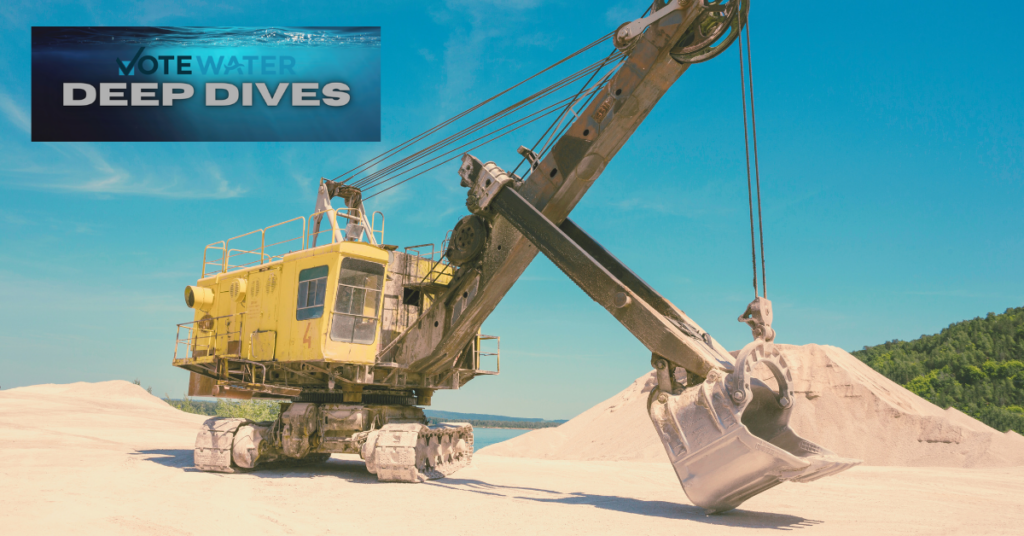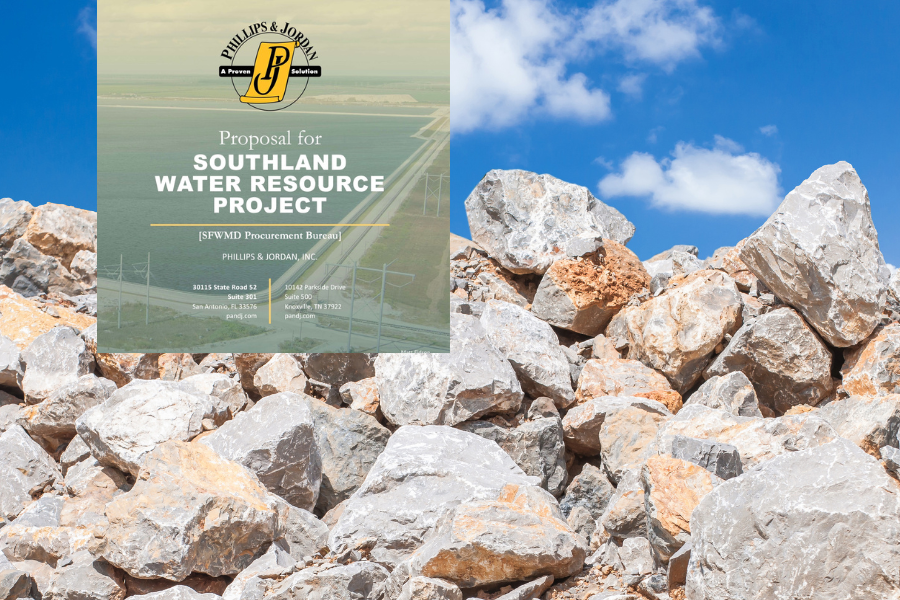DEEP DIVE: Could EAA rock mine trigger toxic trouble?
DEEP DIVE: Could EAA rock mine trigger toxic trouble?

Never look a gift horse in the mouth.
Promoters are trying to pass off a proposed rock mine in the Everglades Agricultural Area as a gift horse in the form of a sometime-in-the-future environmental project.
But this old nag needs a thorough examination before it’s given to the South Florida Water Management District. The district will probably find more problems than rotten teeth.
The proposal calls for turning 8,600 acres of sugarcane land south of Lake Okeechobee owned by U.S. Sugar and Okeelanta Corp. (parent company of Florida Crystals) into a limestone and sand mine for 30 to 40 years. After that, the hole left by the mine would be turned over to the state for use as a “water resource project” capable of holding up to 39.1 billion gallons of water.
Goodness knows more water storage is needed south of Lake O. Even with the 16,600-acre EAA Reservoir Project (a 10,100-acre reservoir and 6,500-acre stormwater treatment area), the Friends of the Everglades “Rescue the River of Grass” campaign calls for at least 325 billion gallons of additional storage on about 77,000 acres and about 25,600 acres of manmade marshes known as stormwater treatment area to truly restore the Everglades while greatly reducing the destructive discharges of Lake O water to the St. Lucie River and Caloosahatchee River estuaries.
But this rock mine-cum-water project would cause more environmental problems than it would solve, both during the mining stage and the storage phase.
Blasting and excavation means toxins
More than 9 million tons of sand and limestone could be mined – basically blasted and dredged — from the site annually for 30 to 40 years.
The toxins used in rock mining, according to “Rock Mining in the Everglades Agricultural Area: An Inventory of Existing Resources and Assessment of Impacts” by the Clean Water Fund, “can have serious — potentially even fatal — impacts on the Everglades ecosystem and its native wildlife.
Toxins used in blasting and excavation include:
- Ammonium nitrate and fuel oil: A common explosive mixture used to blast rock formations.
- Nitric acid: Used in some blasting and processing operations.
- Solvents: Used in various mining processes for separating and processing minerals.
- Other chemicals: Include acids, reagents, oil, and petroleum products.
Runoff flowing from mines can carry those chemicals, as well as sediments, into nearby bodies of water — including canals and the adjacent EAA Reservoir Project — potentially harming aquatic life and impacting water quality.

Adding to the ‘mercury problem?’
Limestone deposits can contain traces of mercury, which, when exposed to sulphate (also found in limestone), can turn into methylmercury, a neurotoxin that can contaminate water sources and affect wildlife.
Mercury pollution is already a problem throughout the United States, and particularly in Florida. According to a South Florida Water Management District report succinctly titled “The Everglades Mercury Problem,” officials warn against eating fish from more than half of the state’s inland waters, and “sport fish from the Everglades canals and marshes have the highest mercury concentrations in the state.”
The process of extracting, crushing, screening and transporting all that limestone will create a lot of dust, which can irritate people’s skin, causing rashes; eyes, causing conjunctivitis, or pink eye; and respiratory systems, potentially leading to lung diseases.
Crystalline silica, a component of some types of limestone, can cause serious health problems such as silicosis, a lung disease.
Limestone mines pollute the air, as well. All that heavy equipment burns a lot of fossil fuel, increasing the amount of carbon emissions in the atmosphere (as if the EAA didn’t already have enough air pollution from pre-harvest sugarcane burning).
And in the process of mining more than 9 million tons of sand and limestone from the site each year for 30-plus years, wouldn’t you expect oil and/or gas to spill from all that heavy equipment? Oil travels through limestone quickly, so it’s easy for spilled oil and gas to make their way into groundwater.
The perils of being below ground
But the most serious question about the proposed rock mine/water project — and the one the water district needs to look at most seriously — is: How will digging that pit and filling it with water affect nearby water supplies, including the Biscayne Aquifer, the source of drinking water for 9 million South Floridians.

An Environmental Resource Permit application filed with the Florida Department of Environmental Protection says the water project resulting (eventually) from the rock mine will be 15 feet deep. The pits likely will be dug to a depth of from 15 to 30 feet to remove the top layer of soil and get down to the ore-bearing layer containing limestone, clay and sand so a dragline can pull it out.
The Clean Water Fund report noted that “aquifer conditions in the EAA are unpredictably porous,” adding: “Groundwater seepage flow through the limestone aquifer is a vitally important yet sensitive process that provides Floridians with clean drinking water; structural damage to the aquifer could interrupt this natural flow and cause regional harm.”
That’s one reason (lower expense, of course, is another) most water projects built in and around the EAA — the EAA Reservoir Project and the C-44 Reservoir and Stormwater Treatment Area east of Lake Okeechobee, for example — are primarily above-ground.
As Daniel Andrews, executive director of the Captains for Clean Water, told South Florida Water Management District governing board members, “I’ve attended many meetings on Everglades restoration in the past 8 1/2 years; and all of the projects, they look very different (than the proposed rock mine/reservoir). … They are not holes in the ground that are a byproduct of a mining operation.”
The Clean Water Fund report says excavated mines “are not safe for water storage” because of the likelihood of contamination.
The post-rock mine reservoir will be “a nasty cauldron of stuff” and a “freak ecosystem (that’s) poor in oxygen and rich in nutrients,” said Thomas Van Lent, senior scientist at the Friends of the Everglades.
Mitchell Latzman, the Friends’ science and policy analyst, said the mine will leave behind “unnatural holes in the ground that don’t resemble anything in Florida and (are) potentially habitat for invasives.”
Similar holes dug in Miami-Dade County have had seepage problems because the limestone beneath them is so porous. Proponents of the EAA rock mine say the limestone there is more dense and less prone to seepage. That’s a claim the water district needs to check out with its own sampling.
So if the water stored in the mined-out pits is too dirty for drinking water and doesn’t meet the requirements for sending it south into the Everglades, what could it be used for?
Well, dirty water is just fine for irrigating sugarcane fields. Could it be that the sugar companies want to profit from 30-plus years of rock mining, get public assistance to turn the mine into a “water project” and then end up using the publicly funded project to water their fields?
In other words, could this “public” project ultimately be aimed at the privatization of water supply?
As we said, never look a gift horse in the mouth. But who, really, gets the gift here?


